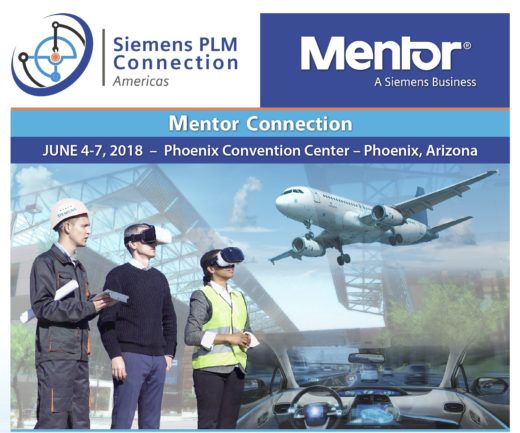Five things they didn’t teach you in Engineering School
Five things they didn’t teach you in Engineering School but they will at the Mentor Connection conference, June 4-7, 2018 in Phoenix; part of the much bigger Siemens PLM Connection conference.

1. The answer isn’t always a heatsink
Unsolved thermal challenges in electronics continue to be the #1 reason for failures. With increasingly complex and higher-powered systems, this challenge has grown exponentially. Add to that the demand by consumers for smaller, lighter products, and electrical engineers face quite a conundrum.
Ian Clark demonstrates six key technologies that enable engineers to provide solutions across multiple industries and product types. If you are faced with a handheld device or an entire datacenter, a single ECU or an entire autonomous vehicle, then answers can be found here.
Session Title: Electronics Cooling with FloTHERM
2. Simulation-based characterization is a reality
1D-3D CFD is not a new idea, but is often clumsy, time-consuming, and sacrifices some accuracy. With OneSim there is no middleware, the 1D and 3D solvers are tightly coupled and link the boundary conditions of a 3D CFD model to nodes in the 1D circuit model, resulting in a converged 1D-3D model.
See a full demo in this session with Robin Bornoff and Morgan Jenkins.
Session Title: 1D-3D CFD; a new paradigm for systems engineers
3. You don’t have to destroy it to understand it
Non-destructive measurement gives a fantastic insight into the lifetime usage of an electrical component. Using this information to increase the accuracy of simulation offers engineers solutions that were not previously available – simulation and test solutions to meet ever-decreasing development timescales. Join Ian Clark and Laszlo Tolnay as they demonstrate a solution that provides high value to users in all industries, especially in terms of unprecedented electronics thermal accuracy and reliability benefits.
Session title: Thermal simulation and test for accurate electronics thermal predictions
4. Simulation can facilitate integration
With the drive towards full autonomy, the automotive supply chain is facing major upheaval. With many new entrants in the component-level technology space, OEMs are often dealing with unknowns, but still shoulder the responsibility for vehicle integration. This requires integration from electronics / technology and the more traditional automotive sector, therefore simulation plays a critical role.
In this session, Puneet Sinha considers some specific examples of how connectivity and toolset selections can help design engineers to account for these issues from early prototyping stages.
Session title: Design-centric energy and thermal management in autonomous EV
5. Efficient designs don’t need to take forever
Highly efficient, small size, versatile and low environmental impact – the perfect electric machine. Effective virtual machine prototyping considers the multi-physics of noise and vibration alongside thermal characteristics, and can help keep engineers on track to that perfect machine. David Lowther uses real world examples to demonstrate how you can explore design options and optimize the final design for cost, efficiency, and robustness.
Session title: Electromagnetic design simulation of motor and generator
For more information and to register visit www.mentor.com/plm #PLMConx
Comments
Leave a Reply
You must be logged in to post a comment.
Enjoyed this! Nice work.